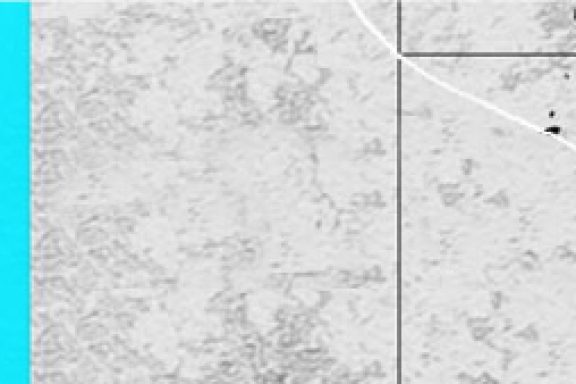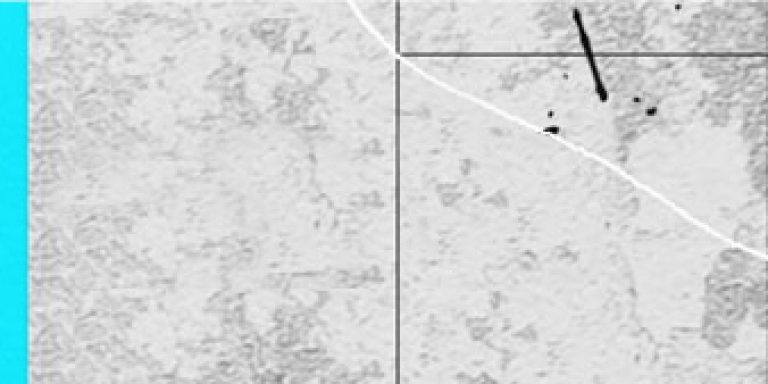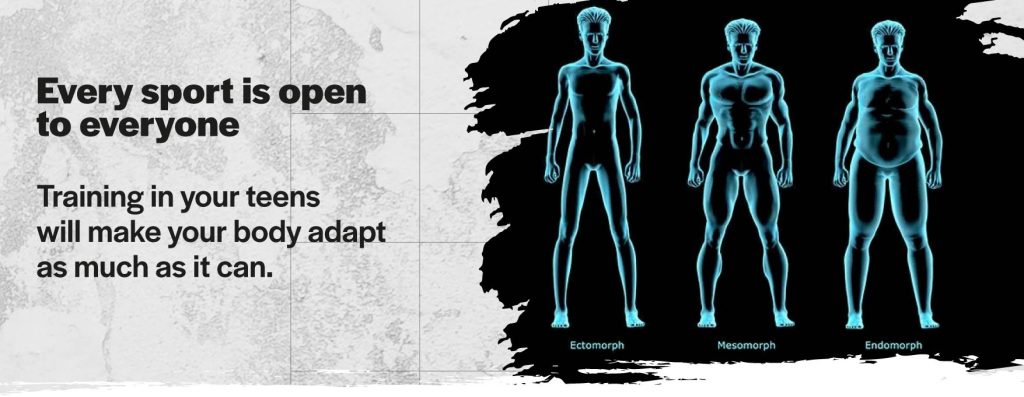Big massive hammer throwers. Slim and muscular jumpers. Tall for basketball, sturdy for rugby. These are just some archetypes of the bodies which fit a certain sport. Is predestination real – and even if it’s the case – does it affect junior sports enjoyment?
Somatotypes is the term for main body types: endomorph, mesomorph and ectomorph. We all fall somewhere in between these three extremes.
How far can you get in a sport with an atypical look?
Inside and outside
I will be honest: genetics have a massive impact on someone’s ability to be good at a particular sport.* A road cyclist who is light framed, but with a high leg to torso ratio, has an advantage. If two athletes are identical in height, weight, stamina and skills, the one with longer legs doesn’t carry as much “dead weight” above the hips while the legs produce motion.
Climbers are also light framed but want the opposite proportions! Shorter legs and long arms are essential, as well as narrow shoulders for better stability. Broad shoulders and defined deltoid is the Thor look, but they make the ball and socket joint more likely to dislocate in overhead positions.**
I could bang on, with swimmers having big hands and feet for improved propulsion in water, weightlifters with short femur compared to the rest of the leg, gymnasts with slim legs and their strong core etc.
Gymnasts prove that it’s not the visible frame that matters, but also your internal physiology. As you may know skeletal muscles are composed by mainly two kinds of fibres (hyperlink to fast and slow twitch fibres blog). The perfect sprinter must be naturally gifted and have a much higher fast twitch fibre percentage.***
Still, every sport is open to everyone. You do have a lower chance of reaching the top if your frame or muscle composition is atypical in your beloved sport. If you’re ok with that, or you want to try your best anyway, then go for it! It’s a bit like climbing Mont Ventoux with a full suspension, fat tyre mountain bike. Sure, you will get there a little slowly, but what a tremendous effort! If you had used the same bike for a muddy downhill race you could have been on the podium with the same dedication. But it would be such fun to see a chunky bike among all the skinny ones! And you would earn kudos either way.
| Type of sport | Some characteristics |
| Endurance sports | Small, light frame with slim limbs and torso Predominance of slow twitch fibres. Great lung capacity |
| Explosive power sports | Long levers (usually long legs) and slim, muscular frame. Predominance of fast twitch fibres |
| Strength sports | Sturdy frame with tendency to muscular hypertrophy. Predominance of fast twitch fibres |
Sport changes you too
Is your passion a sport where the role models look different from you? You can still become competitive if you start training in your teens. There is an equal and opposite reaction to the typical advantages I’ve listed above. If you choose to persevere in your favourite sport in your teenage years, the sport will mould your body. Sure, if you are quite short playing basketball won’t magically make you 2 metres tall and swimming won’t make your hands bigger. But during puberty your bones and muscles are extremely susceptible to stimuli. The right ones at the right time will make your body adapt as much as it can to your beloved sport. Increased fat metabolism for endurance athletes, springier legs for jumpers and sprinters, iron upper body for front rows and arms of flexible steel for javelin throwers.*** Maybe you won’t be in the next Olympics but pursuing your favourite sport will make you stronger inside and out!
References
*Ramos-Jimenez, A., Chavez-Herrera, R., Castro-Sosa, A., Perez-Hernandez, L. C., Herdandez R. P., Olivas-Davila, D. (2016) ‘Body shape, image and composition as predictors of athlete’s performance.’ Intech OpenScience.
**Watts, P. B., Joubert, L. M., Lish, A. K., Mast, J. D., Wilkins, B. (2003) ‘Anthropometry of young competitive sport rock climbers.’ British journal of sports medicine, 37, 420-424.
***Lloyd, S. R, Oliver, L. J. (2014) Strength and Conditioning for young athletes: science and applications. London: Routledge.
Further reading
Kostell, M., Van Raalte, J. L., Brewer, B. W., Cornelius, A. E. (2014) ‘Relationship between sport type and body image of female athletes.’ Trends in sport sciences, 2(21), 65-72.





